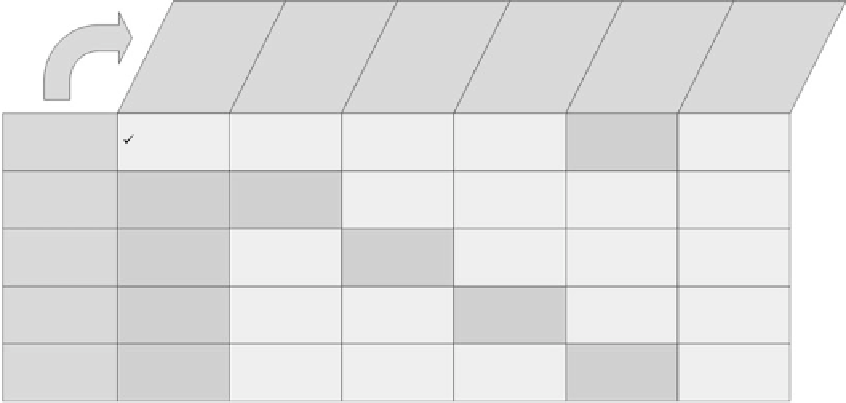Image Processing Reference
In-Depth Information
Impact on
Com stacks
Communication
standards
HW/SW
Interfaces
Functional
integration
Upper bounds
Coexistence
Supported HW
architectures
Lower bounds
Functionality
On/off timing
Second source
Battery
Antenna design
Surface temp.
Interfaces
Footprint
Debugging
Low-power
design
Functional
integration
Peak power
HMI options
Average power
HMI power
consumption
Integration
Peak power
Heat build-up
Sparks
Packaging
Safety barriers
IS adaptations
Interfaces
Functional
integration
Interfaces
Form factor
Modularity
Make vs. buy
Interfaces
Form factor
Battery
technology
Power supply
Duty cycle
Make vs. buy
Battery change
FIGURE .
Development aspect matrix.
devices for industrial automation applications often comprises a set of “chicken and the egg”
problems, where the order of design choices can result in very different outcomes in the final design.
A key success factor is thus to have a very clear view of the driving requirements, i.e., the absolute
“must haves,” stick to them, and let the other lower priority requirements, the “should haves,” undergo
the inevitable trade-off exercise.
Figure . illustrates the interdependencies of key development aspects of WSN devices, and
shows how one design aspect (a row) affects other design aspects (the columns).
The following sections provide a walk-through of the table to demonstrate how design choices in
one dimension can, directly or indirectly, affect other dimensions of the design (and vice versa).
27.3.4.1 Communication Standards
Most customers strive toward the use of standards when building their installations. This secures
interoperability and availability of suppliers and leads to higher volumes (and ultimately lower cost).
The use of a standard is thus often mandatory to be able to compete on the market. One of the key
requirements of wireless devices in industry is coexistence. Hence, this needs to be considered when
choosing a specific standard.
Once selected, the standard in itself will impose upper/lower bounds for the device in terms
of power consumption. Regardless whether you employ low-power electronics and a clever sleep-
wake-up scheme, the communication protocol has a vital impact on the final power consumption
of the system. Some communication protocols are notoriously inefficient and no smart embedded
programming in the world will help get the consumption down to an acceptable level.
The standard can also impose certain physical interfaces, which will have a direct impact on the
design of HW/SW as well as the packaging of the device. For example, the wireless highway address-
able remote transducer (WirelessHART) standard [] requires that you provide a service port on your
devices.
hescopeandarchitecturegiveninthestandardindirectlyalsoprescribesthelevelofintegration
of HW/SW. This is of course highly linked to the available commercial offering that supports the
standard, such as radio transceivers and communication stacks.
So, “simply” by choosing a specific standard, many design choices have been made that will drive
the design of the device. In Section ., we will dig deeper into the wireless standards jungle, and
providesomeinsighttothebasicmechanismsofmodernWSNsolutionstargetedtowardindustrial
automation.



































